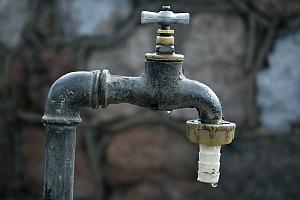Romanian water authority recommends “rational use” of water due to drought

The Romanian Waters National Administration, which manages waterways and lakes in the country, has warned that in the current conditions of severe drought it is necessary for Romanians to use water reserves sparsely, and to avoid watering their gardens or filling up pools.
According to the authorities, present water levels in the 40 reservoirs under public administration stand at 3.45 million cubic meters. “This can provide the necessary raw water for all beneficiaries of the centralized surface water source,” said representatives of Apele Române in a statement quoted by B1TV.
A reservoir is an enlarged natural or artificial lake created using a dam to store fresh water, which is what towns in several counties in Romania desperately need right now. Over a hundred towns in Botoșani, Galați, Bacău, Neamț, Vrancea, Cluj and Argeș are currently hit by drought.
Even where water is available through a local reservoir, it cannot be easily directed to where it is needed. Water in the Stânca-Costești reservoir in Botoșani county, for example, cannot be used for the watering of agricultural crops because of problems in the intermediary basins of water-canal operators. These canals do not have the required capacity for transporting the necessary quantities of water.
Other reservoirs are coming under pressure caused by an expanding population. The Tarnița reservoir in Cluj, for one, was designed for 2,700 people, but today provides the water for 8,000.
Meanwhile, the centralized water supply in Bacău, Neamț, and Vrancea have to rely on underground sources of water, forcing authorities to impose limitations on the water meant for the irrigation of crops.
Several towns in Ilfov county, which circles Bucharest, are experiencing similar limitations on water usage.
Rivers are also affected by the drought. 17 out of the 80 hydrological drought monitoring stations in Romania, registered water flows below what is necessary for river basins. This means that numerous rivers in Romania have low flow levels.
Environment minister Tanczos Barna said that Romania’s strategic reservoirs are 68% full, while 70% of the country is currently impacted by drought. He also echoed the call for a “rational use” of drinking water.
In this context, the authorities asked citizens to stop watering their gardens or filling up their pools, highlighting that the centralized drinking water systems were not designed for this purpose.
(Photo source: Calyx22 | Dreamstime.com)













